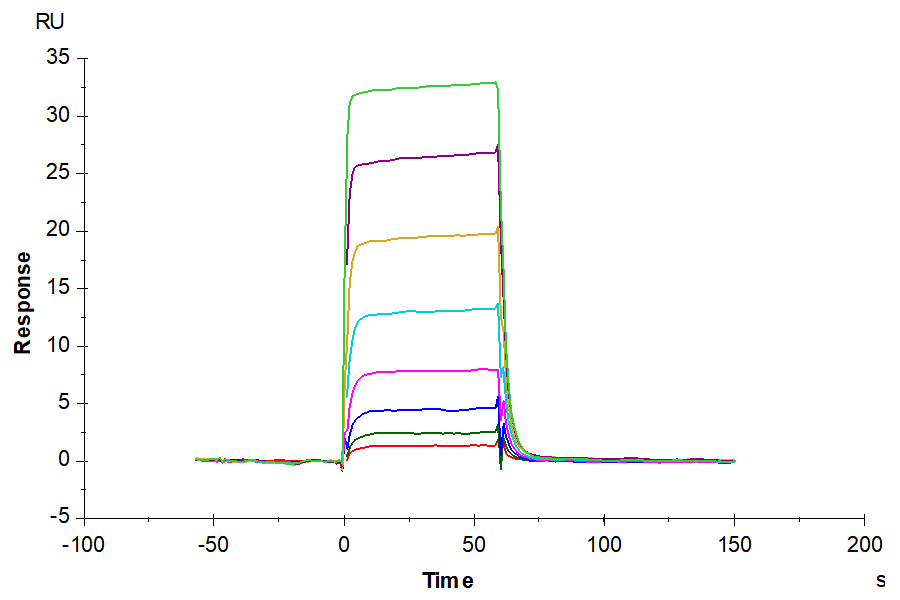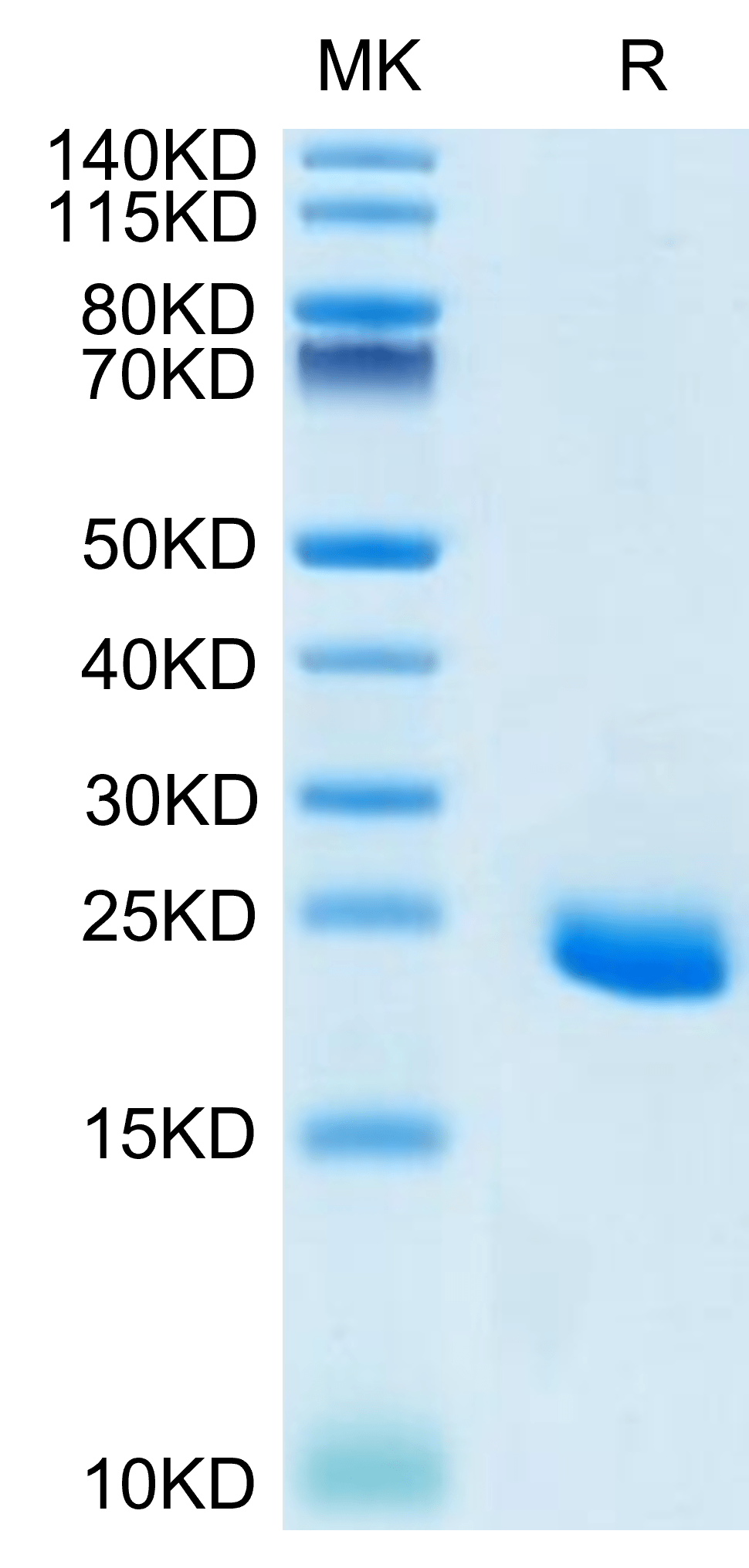| Weight | 1 lbs |
|---|---|
| Dimensions | 9 × 5 × 2 in |
| accession | P52798 |
| express system | HEK293 |
| product tag | C-His |
| purity | > 95% as determined by Tris-Bis PAGE;> 95% as determined by HPLC |
| background | Ephrin A4 is one of the ephrin ligand molecules belonging to the tyrosine kinases receptor family. It was originally identified in a T-lymphoma cell line and seen to be expressed in human adult tissue as well as several tumor types. The cytoplasmic pattern of ephrin A4 could identify a subgroup of primary osteosarcoma patients with a high liability for progression, poor prognosis, and inferior response to chemotherapy. |
| molecular weight | The protein has a predicted MW of 17.5 kDa. Due to glycosylation, the protein migrates to 18-25 kDa based on Tris-Bis PAGE result. |
| available size | 100 µg, 500 µg |
| endotoxin | Less than 1EU per μg by the LAL method. |
Human Ephrin-A4/EFNA4 Protein 5159
$218.00 – $725.00
Summary
- Expression: HEK293
- Binding assay: Yes (SPR)
- Amino Acid Range: Leu26-Gly171
Human Ephrin-A4/EFNA4 Protein 5159
| protein |
|---|
| Size and concentration 100, 500µg and lyophilized |
| Form Lyophilized |
| Storage Instructions Valid for 12 months from date of receipt when stored at -80°C. Recommend to aliquot the protein into smaller quantities for optimal storage. Please minimize freeze-thaw cycles. |
| Storage buffer Shipped at ambient temperature. |
| Purity > 95% as determined by Tris-Bis PAGE |
| target relevance |
|---|
| Ephrin A4 is one of the ephrin ligand molecules belonging to the tyrosine kinases receptor family. It was originally identified in a T-lymphoma cell line and seen to be expressed in human adult tissue as well as several tumor types. The cytoplasmic pattern of ephrin A4 could identify a subgroup of primary osteosarcoma patients with a high liability for progression, poor prognosis, and inferior response to chemotherapy. |
| Protein names Ephrin-A4 (EPH-related receptor tyrosine kinase ligand 4) (LERK-4) |
| Gene names EFNA4,EFNA4 EPLG4 LERK4 |
| Protein family Ephrin family |
| Mass 9606Da |
| Function Cell surface GPI-bound ligand for Eph receptors, a family of receptor tyrosine kinases which are crucial for migration, repulsion and adhesion during neuronal, vascular and epithelial development. Binds promiscuously Eph receptors residing on adjacent cells, leading to contact-dependent bidirectional signaling into neighboring cells. May play a role in the interaction between activated B-lymphocytes and dendritic cells in tonsils. |
| Catalytic activity #N/A |
| Subellular location [Isoform 1]: Cell membrane; Lipid-anchor, GPI-anchor.; [Isoform 2]: Secreted . |
| Tissues Expressed in the adult spleen, lymph node, prostate, ovary, small intestine, and colon, and in fetal heart, lung, liver and kidney. Also detected in hematopoietic cell lines. |
| Target Relevance information above includes information from UniProt accession: P52798 |
| The UniProt Consortium |
Data
Publications
Publications
| pmid | title | authors | citation |
|---|---|---|---|
| We haven't added any publications to our database yet. | |||
Protocols
| relevant to this product |
|---|
Documents
| # | ||
|---|---|---|
| Please enter your product and batch number here to retrieve product datasheet, SDS, and QC information. | ||

















